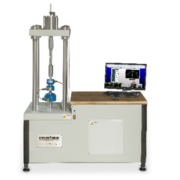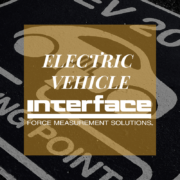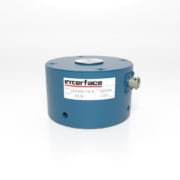Center of Gravity Testing in Robotics Demands Precision Load Cells
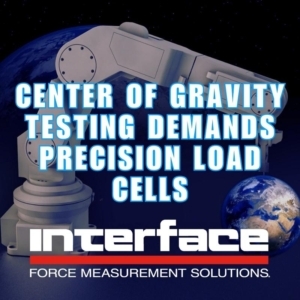 As the use of robotics expands across industries and the types of robotic motions grow in complexity, advanced testing using quality measurement solutions is essential. Contact momentum and gross measurements of indicators are not enough for sophisticated robotics. With the requirements for robots and cobots to have fluid and inertial movement capabilities, control and feedback demand maximized feedback and resolution.
As the use of robotics expands across industries and the types of robotic motions grow in complexity, advanced testing using quality measurement solutions is essential. Contact momentum and gross measurements of indicators are not enough for sophisticated robotics. With the requirements for robots and cobots to have fluid and inertial movement capabilities, control and feedback demand maximized feedback and resolution.
Related to the testing of inertia, load shifting, and interaction, is defining the center of gravity for robots’ actions and applications. The center of gravity (CoG) of a robotic system is a critical factor in its stability and performance.
The CoG is the point at which the entire weight of the system is evenly distributed. If the CoG is not properly located, the system may be unstable and prone to tipping over, which could damage the robot.
For any robotic application that deploys advanced mobility features, the center of gravity can affect the way the system moves. It can also impact the exactness of its movements. Thus, it is essential to use measurement solutions that are highly precise. See: Advancements in Robotics and Cobots Using Interface Sensors.
Why Robotic Engineers Care About CoG Testing
- Stability: The CoG is a major factor in determining the stability of a robot. If the CoG is not properly located, the robot may be unstable and prone to tipping over. This can be a safety hazard, and it can also damage the robot. It is an expensive mistake to not have stability proven before moving forward with the design.
- Performance: The CoG can also affect the performance of a robot. If the CoG is located too high, the robot may be less maneuverable. If the CoG is located too low, the robot may be less stable. By optimizing the CoG, robotic engineers can improve the performance of the robot and use for actions that rely on exact movement.
- Safety: In some industries, such as manufacturing, medical and aerospace, there are safety regulations that require robots to have a certain CoG. For example, in the automotive industry, robots that are used to weld cars must have a CoG that is below a certain point. By testing the CoG of their robots, robotic engineers can ensure that they are meeting safety regulations.
There are different methods for determining the CoG of a robotic system. One common method is to use strain gage load cells. Not all load cells are designed for precision measurement. Interface specializes in precision. Center of gravity testing demands strict measurement. For example, Interface compression load cells are often used in center of gravity testing for robotics because they are very accurate and can measure remarkably small forces.
Interface load cells measure force, and they can be used to determine the weight of a system at different points. By measuring the weight of a system at different points, it is possible to calculate the location of the CoG.
Interface load cells used for center of gravity testing are typically in our miniature load cell line, due to the size of the installation and testing environment. Miniature load cells are easily embedded into robotics, as well as can be used for continuous monitoring.
Surgical Robotic Haptic Force and CoG
Robots used for surgery often utilize haptic force feedback for ensuring that the surgeon does not apply too much force, creating harm or greater impact on the patient. Haptic is the use of force, vibration, or other tactile stimuli to create the sensation of touch. In the context of invasive surgery, haptic force feedback from robotics is used to provide the surgeon with feedback about the forces they are applying to the patient’s tissue. CoG testing can help to prevent the robotic arm from tipping over during surgery.
CoG testing is important for haptic force feedback in invasive surgery because it ensures that the robotic arm is stable and does not tip over during surgery. The CoG is the point at which the entire weight of the robotic arm is evenly distributed. If the CoG is not properly located, the robotic arm may be unstable and prone to tipping over. This can be a safety hazard for the surgeon and the patient.
CoG testing is also used to optimize the design of the robotic arm for haptic force feedback. CoG testing using precision load cells can verify the performance of the robotic arm in haptic force feedback applications. After the robotic arm has been designed and optimized, CoG can ensure that the robotic arm is able to provide the surgeon with the feedback they need to perform surgery safely and accurately.
Robotic Center of Gravity on Production Line
A company is developing a new robotic arm that will be used to simulate human behavior on a manufacturing product line. The robotic arm will be used to pick and place products, and it is important that the arm is stable and does not tip over. To ensure the stability of the robotic arm, the company needs to determine the CoG of the arm. The load cell is placed on the arm, and the arm will be moved through a range of motions. The data from the load cell will be used to calculate the CoG of the arm.
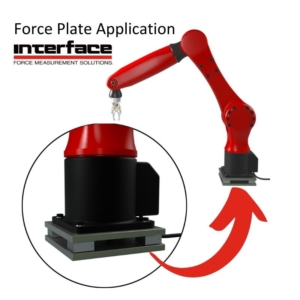 CoG Testing and Multi-Axis Sensors
CoG Testing and Multi-Axis Sensors
Multi-axis load cells are growing in use for robotics testing to provide data across 2, 3 or 6 axes at any given time. These high functioning sensors are ideal for robotic tests where there are simulations of human behaviors. This is detailed in Using Multi-Axis Sensors to Bring Robotics to Life.
To perform CoG testing using precision load cells, a robotic system can be placed on a platform that is supported by the load cells. We call these force plates. The load cells measure the weight of the system at different points, and the data is then used to calculate the location of the CoG. Visit our 6-Axis Force Plate Robotic Arm application note to learn more about force plates and multi-axis sensors.
Benefits Of Using Precision Load Cells for CoG Testing:
- Interface precision load cells provide advanced sensors functional beyond contact and simple indicator measurement, to maximize robotic feedback and optimize performance.
- Interface precision load cells can provide accurate measurements of the weight of a robotic system at different points.
- Interface precision load cells are repeatable and dependable, which means that the results of CoG testing are consistent when testing robots and cobots.
- Interface precision load cells are easy to use, which makes them a practical option for CoG testing and integration into the actual robot.
There are several benefits to using an Interface Mini Load Cells, like our ConvexBT Load Button Load Cell or MBI Overload Protected Miniature Beam Load Cell for high accuracy CoG testing.
First, the miniature load cell is small and lightweight, which makes it easy to attach to the robotic arm. Second, the load cell is designed for precision measurement, which ensures that the CoG of the arm is accurately determined. Third, the quality of Interface precision load cells provides repeatable and dependable measurement, which means that the results of CoG testing are consistent.
Using a miniature load cell of high accuracy is a valuable way to test the CoG of a robot used to simulate human behavior on a product line. This ensures that the robot is stable and does not tip over, which is critical for safety and efficiency.
In addition to testing the CoG of a robotic arm, other tests for these types of robotics include the weight of the arm, the distribution of the weight of the arm, and the friction between the arm and the surface it is moving on. By considering these factors, it is possible to accurately determine the CoG of a robotic arm and ensure that it is stable and safe to operate.
There are many factors that can affect the accuracy of CoG testing using load cells, including the design, capacity and range of measurement of the load cells, the stability of the platform, and the distribution of the weight of the system.
CoG testing is an important part of the design and development of robotic systems. By determining the CoG of a system, it is possible to improve its stability and performance. If you are interested in learning more about CoG testing using Interface precision load cells, please contact us.
ADDITIONAL RESOURCES
Types of Robots Using Interface Sensors
Robotic Grinding and Polishing
Collaborative Robots Using Interface Sensors
Advancements in Robotics and Cobots Using Interface Sensors
Using Multi-Axis Sensors to Bring Robotics to Life
Robotic Surgery Force Feedback
IoT Industrial Robotic Arm App Note
Force Measurement Solutions for Advanced Manufacturing Robotics
Tank Weighing and Center of Gravity App Note
Automation-and-Robotics-Case-Study

